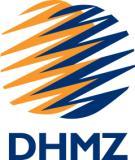Archives: Projekti
IMI projekti
022-0222411-2407 Morbidity and Mortality Risk Assessment in Croatian Population: A Follow-up Study
Allergic Disorders of Respiratory System and Skin
Principal Investigator: Božica Kanceljak Macan
(The Ministry of Science, Education and Sports of the Republic of Croatia (2002-2006))
Principal Investigator: Božica Kanceljak Macan
Since January 1 2005, Principal Investigator Davor Plavec; since November 1 2005, Principal Investigator Jelena Macan
SUMMARY
The pathophysiological mechanism involved in allergic diseases (ADs) is still not clear. It is not clear if ADs are local or systemic disorders (Bousquet J. ACI International 2000;12:141.2). Sensitization isn’t always followed by clinical symptoms (Wahn U. Allergy 2000;55:591-9).
Increased prevalence of respiratory ADs , especially asthma, is related to antigens of biologic origin, i.e. from bacteria, moulds, mites, animals, insects (Lacey J. Clinical Application of Aerobyology. Braine-l Alleud, Belgium: The UCB Institute of Allergy 1996;45-55). The relationship between biological activity, way of exposure and the development of sensitization is not clear.
Aim is to examine:
1. The composition and concentration of biological allergens (mites, cat, dog, cockroach) and endotoxin in indoors dust from urban and rural areas of the Croatian continental and Mediterranean regions,
2. Prevalence of the sensitization markers by skin testing, measuring IgE and IgG, nasal and bronchial reactivity, and analysis of induced sputum in general population and patients with asthma and rhinitis. The main hypothesis is that the level of exposure and different environmental conditions are related to the prevalence of the sensitization markers and specific symptoms.
The importance of this investigation is in studying the relationship between level of allergens and endotoxin in the dust from homes, public and occupational indoor environments with modern characteristics, and life habits. It is also important to establish risk concentrations of the allergens and endotoxin for the occurrence of sensitization markers and relevant clinical symptoms in adult population of Croatia and to suggest effective preventive measures.
Genotoxicity of Natural and Anthropogenic Agents
The Ministry of Science, Education and Sports of the Republic of Croatia (2002-2006)
Principal Investigator: Vilena Kašuba
Field: Biology
Branch: Biology
SUMMARY
In last few decades, the number and quantity of toxic agents, which are threat to the environment, was rashly increased with the development of industry. Consequently humans are exposed to them directly or by nourishment.
It is long appreciated that environmental mutagens can have clastogenicand/or aneugenic activities. The event, which irreversibly affects the cell-integrity, is double-strand break (DSB) of the DNA molecule. DNA DSBs may arise either spontaneously during cellular processes or as a result of exposure to DNA-damaging agents such as ionizing radiation, or chemical agents.
It is widely accepted that nonrepaired or misrepaired DSB are the main lesions leading to the production of chromosomal aberrations, mutagenesis,oncogenic transformation, and cell death. Studies focusing on this relationship, as well as the possible modulation of DNA repair mechanisms, are currently of major interest. Great characters in these studies have methods that insure quick results with small quantity of the test material. Mutagen effects of ionizing radiation, heavy metals, and some organic combinations present in human environment and work-places, will be studied in human peripheral blood lymphocytes, rat reticulocytes, and in animal cell-cultures.
In our investigations we will use the following methods: comet assay, chromosomal aberration analysis, sister chromatid exchange analysis, micronucleus assay in cytochalasin B blocked human lymphocytes, rat bone-marrow and peripheral blood reticulocytes, and LDH (lactat-dehydrogenase) colorimetric determination in cell culture medium (as a result of the cell membrane damage because of activity of different environmental and professional agents). The results should contribute to better understanding of effects of agents from environment to a genome and cell membrane, and, consequently, to organization and protection exposed subjects.
Keywords:
Genotoxic effects, ionizing radiation, chemical agents, chromosome aberrations, micronucleus assay, sister chromatid exchange, alkali-gel electrophoresis- comet assay, cell membrane.
Monitoring of Air Pollution at National Network Stations for the Purpose of Continued Air Quality Monitoring

Contract with the Ministry of Environmental and Nature Protection and the Meteorological and Hydrological Service
Duration: since 2015
Monitoring of Air Pollution at “Ksaverska cesta” Station
Monitoring of Air Pollution at “Plitvička jezera” Station
Praćenje onečišćenja zraka na postaji “Zagreb-3”
Monitoring Environmental Radioactivity in the Vicinity of the Plomin Coal Power Plant

